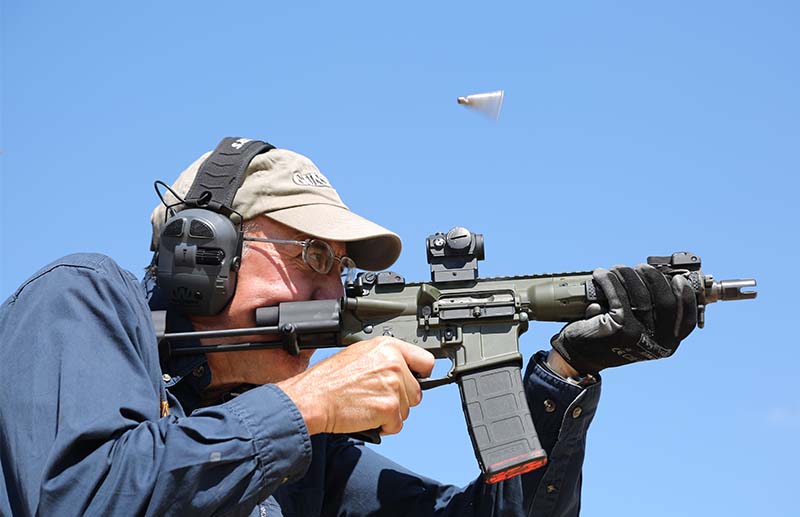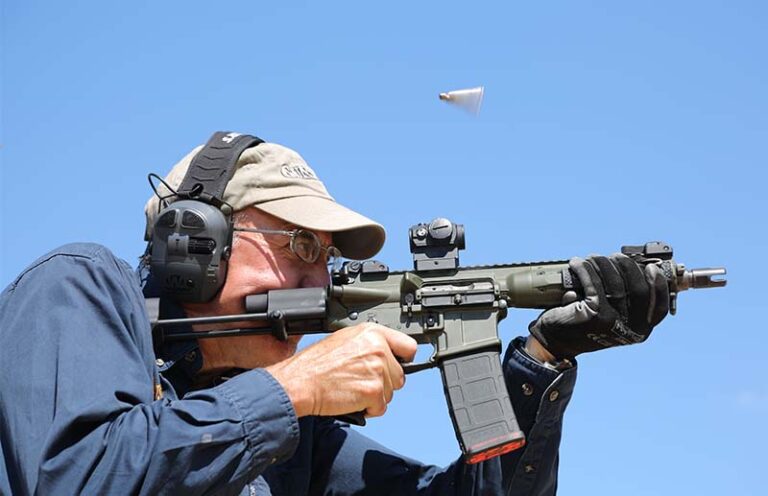
AR-15 wizard Patrick Sweeney reveals the critical things he checks on every AR he brings home.
Few gun scribes have spilled more ink on the AR-15 subject than Patrick Sweeney. In addition to being a respected law enforcement armorer, he’s authored thousands of articles, columns and dozens of books, including the popular title Gunsmithing the AR-15: The Bench Manual—specializing in AR-15 maintenance, troubleshooting, upgrading, gunsmithing and shooting.
GD: So, you’re this world-renowned AR-15 expert, you’re an AR-15 armorer.
SWEENEY: [laughs] You’re gonna give me a swelled head if you keep this up.
GD: OK, but you find a good deal on a $700 AR-15, and you get it home.
SWEENEY: It used to be that if you spent $600 for an AR-15—and I’m dating myself here—that you were spending your money at the top of what you would be spending for an AR-15. Nowadays, you say to somebody that you got an AR for $600, and they go, “What’s wrong with it? What kind of cheap Chinese whatever is it that you just bought?” And people don’t blink at a $2,000 AR. Well, for $2,000 or $2,400, yeah, it better have all of these details taken care of.
GD: Where do you start? You get it home and what does Patrick do?
SWEENEY: Start at the muzzle and make sure that whatever flash hider or muzzle brake that’s on there is on straight and that your crown hasn’t been mangled or screwed with. You’d be surprised how badly a rifle reacts after somebody has dropped it in the dirt, and now it doesn’t shoot well anymore, so they sell it without telling you. So, look at that and make sure it’s fine.
From there, it’s back to the chamber, and the first thing to check is whether it’s a .223 or a 5.56 leade. Many people poo-poo the idea and think that .223 and 5.56 it’s all the same. I’ve seen enough guns in classes go down from shooting 5.56-rated ammo in a .223 leade that I check it. And except for a few brands like Daniel Defense, Geissele, Colt, a few others, when it says 5.56, you can bet all the money in your pocket that it is 5.56.
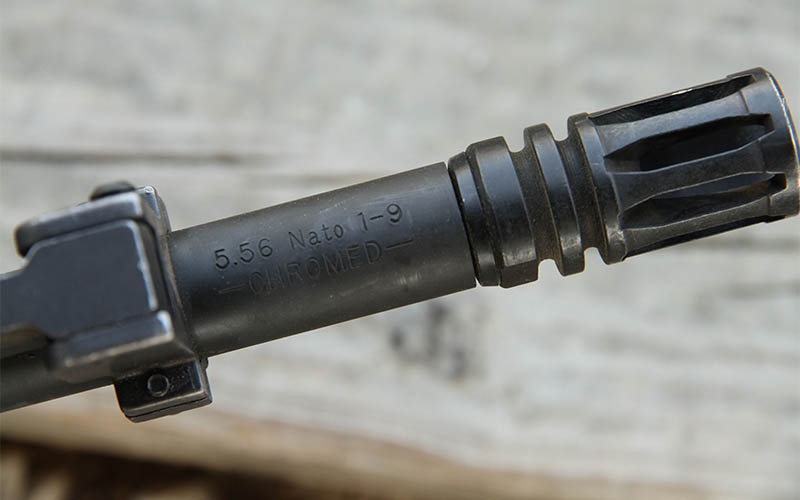
GD: So, you wouldn’t assume even if it says 5.56?
SWEENEY: I wouldn’t assume so, no. In one class I remember, we had half a dozen rifles with departments that issued them to officers, and the barrels said 5.56. And we gauged them, and four of the six that were marked 5.56 from companies we didn’t know weren’t; they were .223. But 5.56 sells rifles, so that’s what you mark it as. OK, fine, you put a racing stripe on a car; it doesn’t make it a street racer. And in the course of that class, all four of those rifles that had .223 chambers but were 5.56-marked went down with the malfunctions we associate with that particular problem.
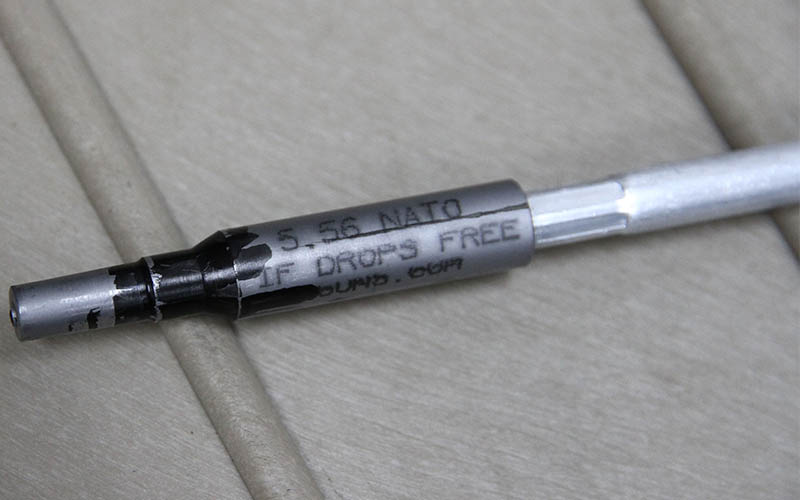
And I told the officers, “You should get that corrected, but we’re going to have a test here.” And sure enough, it was a five-day class, and I think it was the afternoon of Tuesday that these guns started having problems. So I used my gauge and reamer from Ned Christiansen to gauge each barrel and make sure it was [5.56], and if it wasn’t, to ream it out.
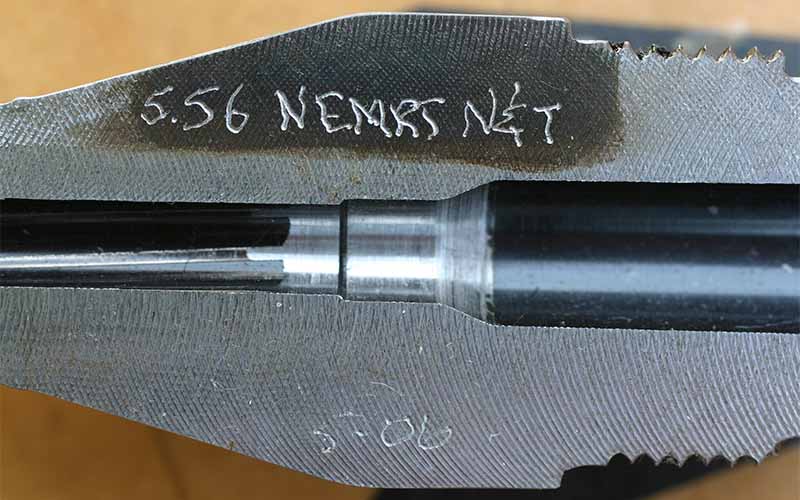
One proviso: If you have a barrel that has been Melanite treated, you don’t ream it because it’s harder than any reamer you’re going to put in there.
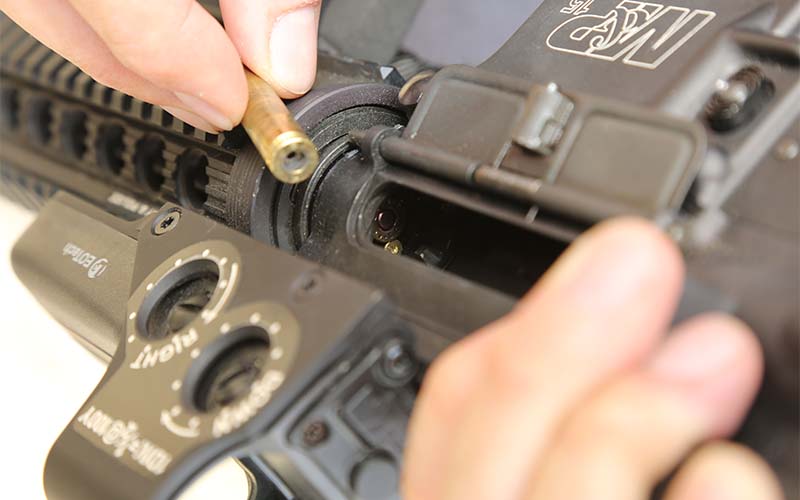
GD: OK, what’s your next step?
SWEENEY: Next, we go to the bolt and carrier and make sure that the gas key is properly staked. And if it’s not, take it off, clean it up, tighten it back down with Loctite and stake it. Because if your gas key comes loose, you’ll lose gas pressure, and you’ve got malfunctions—the always “oh my God moment” of short-stroking AR-15s.

Back in the early days, everyone assumed short-stroking meant that the people who made the barrel hadn’t drilled the gas port out large enough. People would go in there, hogging out gas ports … they would drill out the gas port to feed more gas to the leaky gas key so that the gun would cycle properly. And if you fit the gas key properly, so it wasn’t leaking anymore, all of a sudden, your brass is going off into the next county because, oh, they drilled out the gas key. No! Leave the gas ports alone.
Then, it’s onto extractors. If you don’t have an O-ring, or better yet, a defender on your extractor, your extractor’s under tension. The Army says carbines need the gold spring and the O-ring, but rifles don’t. The Army’s wrong. Every AR-15/M16, regardless of barrel length, needs all the extraction you can get on it.
From there, it’s back to the buffer. Personally, I like to run the heaviest buffer that the gun will properly cycle with. And some people like to tune it to this or that … but if it’s a standard buffer and the brass isn’t getting thrown too far, I’ll probably leave it alone. But I’m just as likely to throw a standard buffer into the bin with all the other standard buffers and put in an H or an H1.
The next thing is the castle nut on the buffer tube. It has to be staked. Now, I don’t care if your friend says you can torque it up tight enough or if you’ve got the super-great Loctite that will hold it tight. It’s gotta be staked.
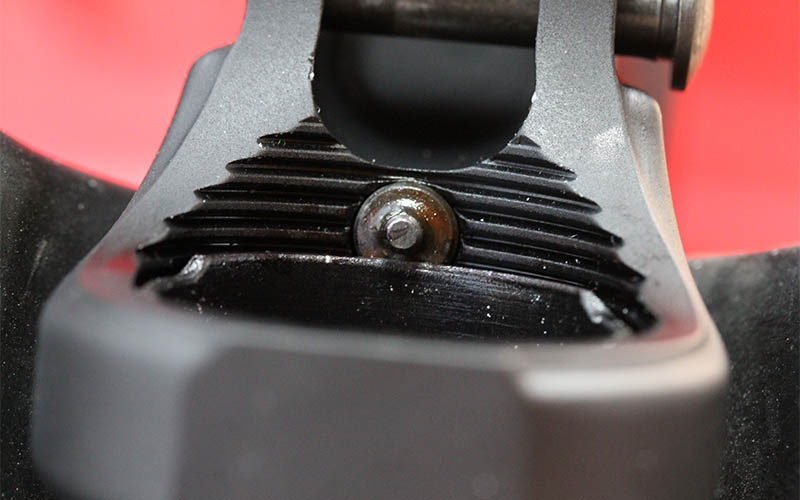
Last thing, the barrel nut must be tight. The specs say anywhere from 30 to 80 pounds of torque. If it lines up with a gas key with 30 ft-lb, I’m not sure I would go with that. I’ll yank it apart and put in a shim to get it to time up somewhere above 30 ft-lb.
But if you take a no-name AR and do all those things to it, it will run. You may not have the MOA rifle that everybody promises you is your birthright as an American to have, but it’ll run.
Editor’s Note: This article originally appeared in the January 2024 issue of Gun Digest the Magazine.
More On The AR:

Next Step: Get your FREE Printable Target Pack
Enhance your shooting precision with our 62 MOA Targets, perfect for rifles and handguns. Crafted in collaboration with Storm Tactical for accuracy and versatility.
Subscribe to the Gun Digest email newsletter and get your downloadable target pack sent straight to your inbox. Stay updated with the latest firearms info in the industry.
